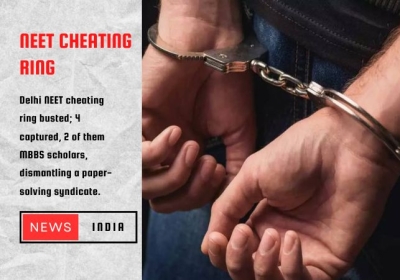Swati Maliwal captured on camera leaving Kejriwal's residence.
The latest footage captures Swati Maliwal leaving Kejriwal's residence, as caught on camera.
In the annals of political intrigue, few incidents captivate public attention, such as the clash of personalities within the corridors of power. One such episode unfolded on the morning of May 13th, as CCTV footage from Chief Minister Arvind Kejriwal's residence revealed the departure of Swati Maliwal, the Chairperson of the Delhi Commission for Women. What ensued was a whirlwind of allegations, counter-claims, and political ramifications that reverberated across the capital's political landscape.
The CCTV footage, now etched into public consciousness, captured Maliwal's exit from the main gate of Kejriwal's residence. It depicted Maliwal engaged in an interaction with a female security guard, whose intervention seemed to be met with composure by Maliwal. However, this apparent tranquillity stood in stark contrast to the earlier narrative put forth by security personnel, raising questions about the circumstances surrounding Maliwal's departure.
The revelation of this footage sparked an immediate outcry, both within political circles and among the general public. Questions began to surface about the nature of Maliwal's visit and the events that transpired during her time at Kejriwal's residence. Was there a confrontation? Was there a physical altercation? The answers to these questions remained elusive, shrouded in the fog of conflicting accounts and political agendas.
Amidst the growing scrutiny, Chief Minister Arvind Kejriwal's silence on the matter became increasingly conspicuous. His reticence invited criticism from opposition parties, particularly the Bharatiya Janata Party (BJP), which seized upon the opportunity to cast aspersions on his leadership. The absence of a clear statement from Kejriwal only served to fuel speculation and deepen the intrigue surrounding the incident.
In a dramatic turn of events, Vibhav Kumar, Kejriwal's private secretary, filed a counter-complaint alleging that Maliwal's accusations were baseless. Kumar vehemently denied any wrongdoing and accused Maliwal of attempting to implicate him falsely. This development added a new layer of complexity to an already convoluted narrative, further complicating efforts to discern the truth.
Against this backdrop of conflicting claims and political manoeuvring, the significance of the CCTV footage cannot be overstated. It represents a crucial piece of evidence in unravelling the truth behind Maliwal's visit to Kejriwal's residence. However, its interpretation remains subjective, with supporters and detractors of both Maliwal and Kejriwal offering contrasting analyses.
For Maliwal's supporters, the footage serves as vindication, providing visual evidence that contradicts the earlier allegations made against her. They argue that Maliwal's demeanour in the video suggests innocence, casting doubt on the credibility of her accusers. In their view, the CCTV footage exonerates Maliwal and exposes the falsehoods propagated by those seeking to tarnish her reputation.
Conversely, critics of Maliwal view the footage through a different lens, interpreting her actions as calculated and manipulative. They argue that Maliwal's apparent composure is a facade designed to conceal her true intentions. According to this narrative, the CCTV footage offers no conclusive evidence of innocence and should be treated with scepticism.
Amidst these divergent interpretations, one fact remains undisputed: the need for a thorough and impartial investigation into the events of May 13th. The conflicting accounts and political motivations underscore the importance of uncovering the truth, irrespective of its implications. Only through a rigorous examination of the available evidence can justice be served and accountability upheld.
As the investigation unfolds, the spotlight remains firmly fixed on Swati Maliwal, Arvind Kejriwal, and the Delhi political establishment at large. Their actions and responses in the wake of this controversy will undoubtedly shape public perception and influence the course of future political developments. In the end, the truth may prove elusive, but the quest for transparency and accountability must endure.
Also read:



.jpg)


